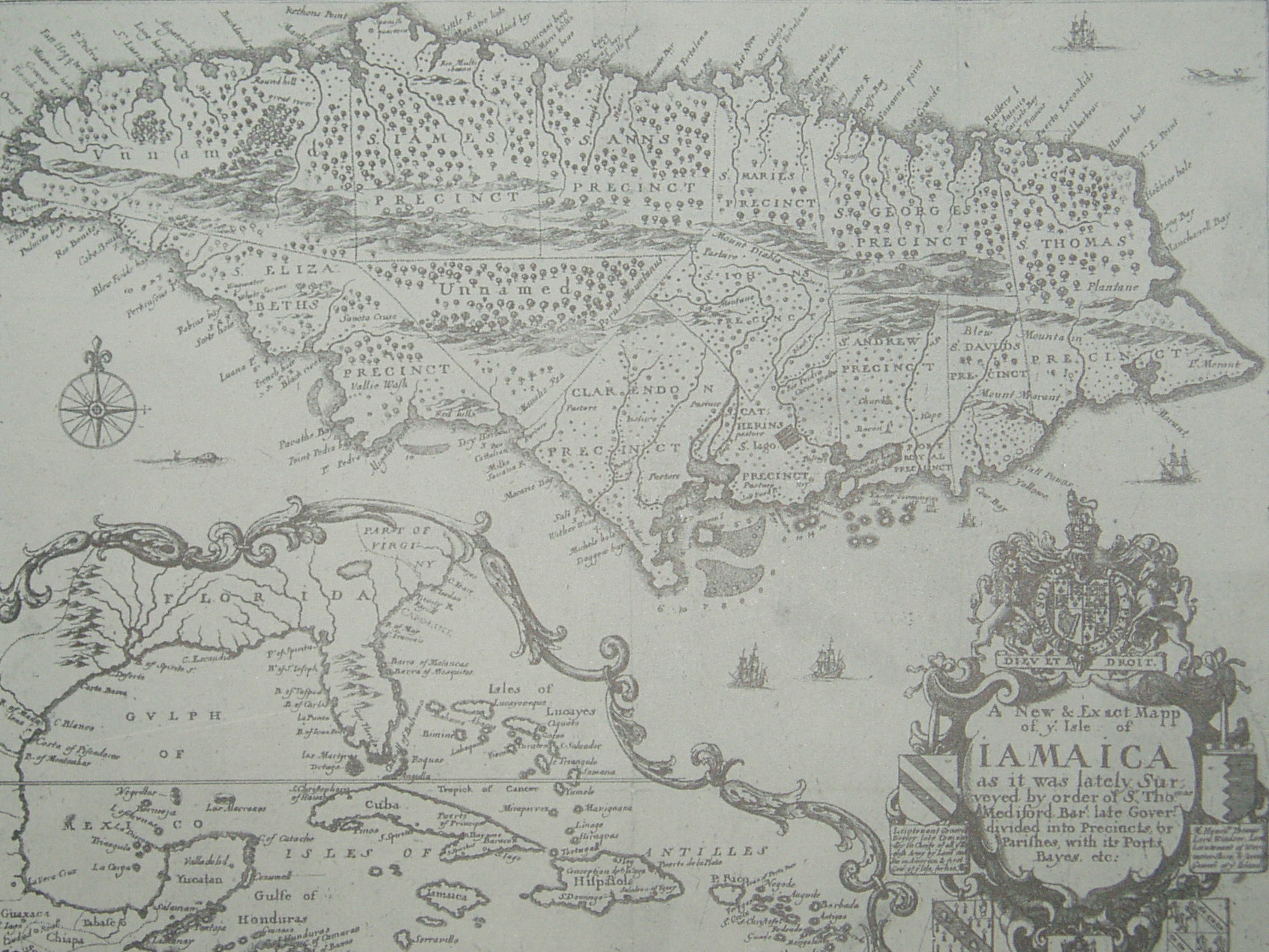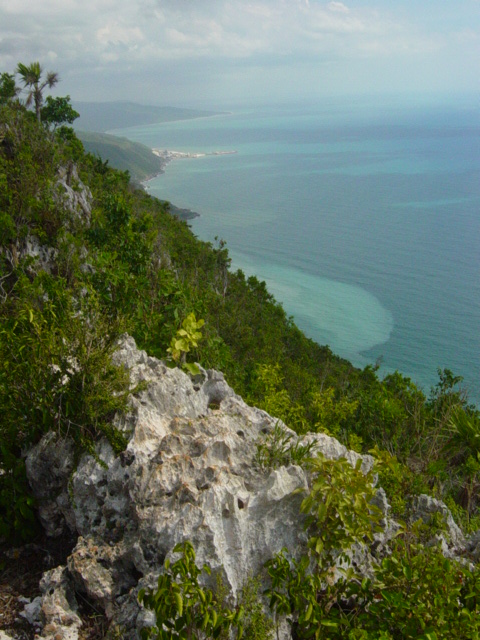|
New Market, Jamaica
New Market is a small town in the parish of Saint Elizabeth, Jamaica. History S. J. Manley, the paternal grandfather of Norman Manley, was a shopkeeper at Kepp, New Market, in the 1860s. His grave was rediscovered in 2016. In June 1979, New Market was heavily affected by floods induced by Tropical Depression One, which caused the deaths of 41 people across Jamaica. A "lake district" was created at New Market, covering 600 acres of land with water up to 90 feet deep. Even after some flood waters had receded, the government reported that New Market was still "buried under 80 feet of water." The government proposed to build a new settlement in the area of the town at Mocho, and a new health centre. By February 1980, only half of the flooded areas at New Market were free of water. The new town was built by the Urban Development Corporation and was named Lewisville after the Cleve Lewis, a former member of parliament (MP) for the area and the father of Neville Lewis, the MP ... [...More Info...] [...Related Items...] OR: [Wikipedia] [Google] [Baidu] |
Parishes Of Jamaica
The parishes of Jamaica are the main units of local government in Jamaica. They were created following the English Invasion of Jamaica in 1655. This administrative structure for the Colony of Jamaica developed slowly. However, since 1 May 1867 Jamaica has been divided into the current fourteen parishes. These were retained after independence in 1962. They are grouped into three historic counties, which no longer have any administrative relevance. Every parish has a coast; none are landlocked. List (1) The parishes of Kingston and Saint Andrew together form the ''Kingston and St. Andrew Corporation''. (2) The parish of Kingston does not encompass all of the city of Kingston. Most of the city is in the parish of St. Andrew. History Early history Following the English conquest of Jamaica the first phase of colonisation was carried out by the Army, with a system of Regimental plantations. These were drawn up on the southern flat lands, with the Regimental commanders charge ... [...More Info...] [...Related Items...] OR: [Wikipedia] [Google] [Baidu] |
Saint Elizabeth Parish
Saint Elizabeth, one of Jamaica's largest parishes, is located in the southwest of the island, in the county of Cornwall. Its capital, Black River, is located at the mouth of the Black River, the widest on the island. History Saint Elizabeth originally included most of the southwest part of the island, but Westmoreland was taken from it in 1703, and in 1814 a part of Manchester. The resulting areas were named after the wife of Sir Thomas Modyford, the first English Governor of Jamaica. There are archeological traces of Taíno/Arawak existence in the parish, as well as of 17th-century colonial Spanish settlements. After 1655, when the English settled on the island, they concentrated on developing large sugar cane plantations with enslaved African workers. Today, buildings with 'Spanish wall' construction (masonry of limestone sand and stone between wooden frames) can still be seen in some areas. St Elizabeth became a prosperous parish, and Black River an important seaport. ... [...More Info...] [...Related Items...] OR: [Wikipedia] [Google] [Baidu] |
Jamaica
Jamaica (; ) is an island country situated in the Caribbean Sea. Spanning in area, it is the third-largest island of the Greater Antilles and the Caribbean (after Cuba and Hispaniola). Jamaica lies about south of Cuba, and west of Hispaniola (the island containing the countries of Haiti and the Dominican Republic); the British Overseas Territory of the Cayman Islands lies some to the north-west. Originally inhabited by the indigenous Taíno peoples, the island came under Spanish rule following the arrival of Christopher Columbus in 1494. Many of the indigenous people either were killed or died of diseases, after which the Spanish brought large numbers of African slaves to Jamaica as labourers. The island remained a possession of Spain until 1655, when England (later Great Britain) conquered it, renaming it ''Jamaica''. Under British colonial rule Jamaica became a leading sugar exporter, with a plantation economy dependent on the African slaves and later their des ... [...More Info...] [...Related Items...] OR: [Wikipedia] [Google] [Baidu] |
Norman Manley
Norman Washington Manley (4 July 1893 – 2 September 1969) was a Jamaican statesman who served as the first and only Premier of Jamaica. A Rhodes Scholar, Manley became one of Jamaica's leading lawyers in the 1920s. Manley was an advocate of universal suffrage, which was granted by the British colonial government to the colony in 1944. Encouraged by Osmond Theodore Fairclough, who had joined forces with the brothers Frank and Ken Hill, Hedley P. Jacobs and others in 1938, he helped to launch the People's National Party which later was affiliated to the Trade Union Congress and even later the National Workers Union. He led the PNP in every election from 1944 to 1967.http://nlj.gov.jm/wp-content/uploads/2017/04/bn_manley_nw_1.pdf Their efforts resulted in the New Constitution of 1944, granting full adult suffrage. Manley served as the colony's Chief Minister from 1955 to 1959, and as Premier from 1959 to 1962. He was a proponent of self-government but was persuaded to ... [...More Info...] [...Related Items...] OR: [Wikipedia] [Google] [Baidu] |
Tropical Depression One (1979)
Tropical Depression One brought severe flooding to Jamaica in June 1979. The second tropical cyclone of the Atlantic hurricane season, the depression developed from a tropical wave to the south of Grand Cayman on June 11. Tracking generally northward, the depression passed west of Jamaica. On June 12, the depression peaked with maximum sustained winds of 35 mph (55 km/h), never having reached tropical storm status. The following day, it made landfall in Cuba, where minimal impact was recorded. Early on June 14, the depression emerged into the western Atlantic Ocean and then moved parallel to the east coast of Florida for a few days. The depression made another landfall in South Carolina on June 16 and dissipated shortly thereafter. The slow movement of the depression to the west of Jamaica resulted in torrential rainfall, peaking at in Friendship, a city in Westmoreland Parish. Throughout western Jamaica, about 1,000 homes were destroyed ... [...More Info...] [...Related Items...] OR: [Wikipedia] [Google] [Baidu] |
Jamaican Dollar
The Jamaican dollar (sign: $; code: JMD) has been the currency of Jamaica since 1969. It is often abbreviated to J$, the J serving to distinguish it from other dollar-denominated currencies. It is divided into 100 cents, although cent denominations are no longer in use as of 2018. Goods and services may still be priced in cents, but cash transactions are now rounded to the nearest dollar. Exchange rate History The history of currency in Jamaica should not be considered in isolation of the wider picture in the British West Indies as a whole. See British West Indies dollar. The peculiar feature about Jamaica was the fact that it was the only British West Indies territory to use special issues of the sterling coinage, apart from the four-pence groat coin which was specially issued for all the British West Indies, and later only for British Guiana. The earliest money in Jamaica was Spanish copper coins called ''maravedíes''. This relates to the fact that for nearly four h ... [...More Info...] [...Related Items...] OR: [Wikipedia] [Google] [Baidu] |
Edward Seaga
Edward Philip George Seaga ( or ; 28 May 1930 – 28 May 2019) was a Jamaican politician. He was the fifth Prime Minister of Jamaica, from 1980 to 1989, and the leader of the Jamaica Labour Party from 1974 to 2005.Profile: Edward Seaga , ; retrieved 8 April 2012. He served as leader of the opposition from 1974 to 1980, and again from 1989 until January 2005. His retirement from political life marked the end of Jamaica's founding generation in active politics. He was the last serving politician to have entered public life before independence in 1962, as he was appointed to the Legislative Council (now the Senate) in 1959. Seaga is credited with having built the financial and planning infrastructure of the country a ... [...More Info...] [...Related Items...] OR: [Wikipedia] [Google] [Baidu] |
Prime Minister Of Jamaica
The prime minister of Jamaica is Jamaica's head of government, currently Andrew Holness. Holness, as leader of the governing Jamaica Labour Party (JLP), was sworn in as prime minister on 7 September 2020, having been re-elected as a result of the JLP's landslide victory in the 2020 Jamaican general election. The prime minister is formally appointed into office by the governor general, who represents King Charles III. Official residence and office The prime minister of Jamaica's official residence is Vale Royal. The property was constructed in 1694 by the planter Sir William Taylor, who was one of the richest men in Jamaica at the time. In 1928 the property was sold to the government and became the official residence of the British colonial secretary (then Sir Reginald Edward Stubbs). Vale Royal has subsequently become the official residence of the prime minister. Vale Royal is not open to the public. has been the location of the Office of the Prime Minister since 1972. Pri ... [...More Info...] [...Related Items...] OR: [Wikipedia] [Google] [Baidu] |




